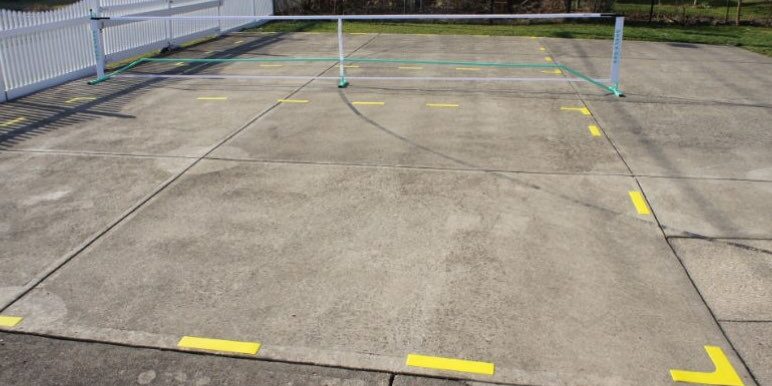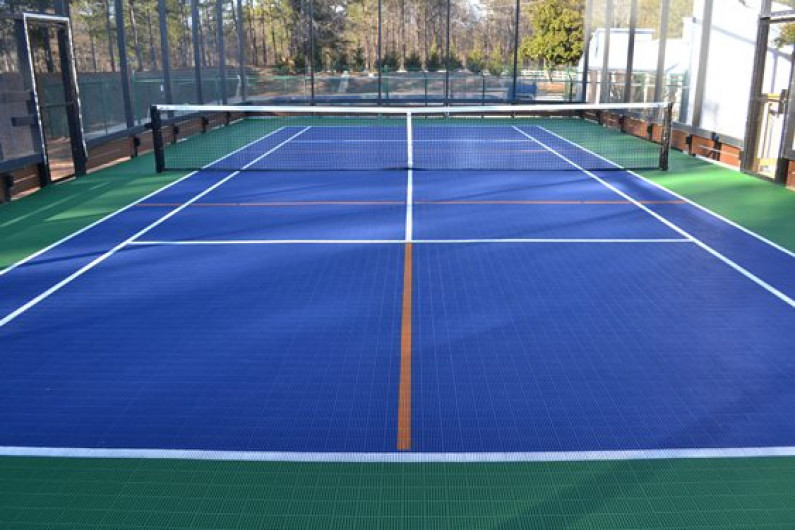Pickleball Court Construction-- Necessary Tips for a Resilient Court
Pickleball Court Construction-- Necessary Tips for a Resilient Court
Blog Article
Sustainable Practices in Pickleball Court Construction You Ought To Know
As the appeal of pickleball proceeds to increase, so as well does the need for sustainable methods in court building. This technique not only addresses environmental problems yet additionally improves the durability and functionality of the courts. From picking eco-friendly products to applying effective water drainage and energy-saving illumination options, there are many methods to think about. Yet, the influence of these methods expands much beyond the court itself. Understanding exactly how each component contributes to an extra lasting future invites further exploration right into the elaborate equilibrium between entertainment growth and environmental stewardship.
Picking Eco-Friendly Products
Choosing environment-friendly products is an essential action in the building of lasting pickleball courts. The option of lasting materials not just decreases ecological impact but likewise improves the durability and performance of the court. Secret products include recycled rubber for the surface, which provides superb durability and shock absorption while diverting waste from land fills.
Additionally, utilizing locally sourced products reduces transportation exhausts and sustains local economic situations. Pickleball court construction. For example, using native hardwoods for fencing and seats can provide a lasting visual while making certain durability versus the elements.
Including permeable products for court foundations can further add to sustainability by enabling all-natural water drainage and lowering overflow. These selections not only shield regional environments but also promote much healthier play atmospheres.
Efficient Drainage Solutions
While the selection of green materials is important, implementing effective drain options is similarly critical for preserving sustainable pickleball courts. Correct drain not only protects the court surface from water damages yet likewise minimizes erosion and runoff, advertising ecological honesty.
Effective drainage systems can include permeable paving, which enables water to infiltrate the ground as opposed to merging externally. This lowers the chance of standing water, which can cause mold and mildew and various other upkeep issues. Additionally, integrating purposefully placed drain channels and swales can guide excess water far from the court area, ensuring a dry playing surface and avoiding dirt erosion.
Using native vegetation in the landscaping around the courts can further enhance water drainage by taking in excess water and decreasing drainage. These plants need much less watering and promote biodiversity, aligning with sustainable practices.
In addition, it is critical to regularly keep the water drainage system to ensure its long-lasting performance. This includes clearing up particles and tracking for clogs. By focusing on reliable drainage options, pickleball court producers can substantially add to the sustainability and long life of the center, ultimately benefiting both players and the environment.
Energy-Efficient Lighting Options
As the demand for pickleball remains to grow, integrating energy-efficient illumination alternatives into court style has become increasingly essential for sustainability. Standard lights systems often take in too much power, adding to greater functional prices and ecological influence. As a result, embracing modern-day, energy-efficient innovations is best site vital for both new constructions and renovations.
LED (Light Emitting Diode) lights stands out as a leading option due to its long life and energy savings (Pickleball court construction). Contrasted to traditional lighting, LEDs make use of about 75% less energy and can last up to 25 times longer, substantially reducing upkeep costs. The directional nature of LED lights minimizes light pollution, guaranteeing that lighting is focused on the court instead than bordering locations.

Sustainable Surface Alternatives
Checking out lasting surface area alternatives for pickleball courts has actually obtained traction among gamers and contractors alike. The focus on eco-friendly products not only straightens with the expanding environmental understanding yet also enhances the efficiency and resilience of the courts.
This product offers excellent shock absorption, reducing the threat of injuries for gamers while advertising sustainability. These floor tiles are simple to replace and mount, and their convenience enables for various court setups.
All-natural turf courts are additionally emerging as a lasting selection, promoting biodiversity and reducing the warm island impact. Nevertheless, they need regular maintenance and water, which may not straighten with all sustainability goals.

Water Conservation Strategies

One more effective technique entails the installment of rain harvesting systems. These systems collect and keep rainwater for usage in preserving read this article court surface areas and landscape design. This method not only preserves drinkable water however also reduces reliance on community sources.
In addition, using drought-resistant landscape design around the courts is important. Indigenous plants need less water and are much better adapted to local climate problems, hence reducing general water consumption. Additionally, making use of efficient watering systems, such as drip watering, guarantees that water is delivered straight to plant roots, decreasing dissipation and waste.
Conclusion
Including lasting methods in pickleball court construction considerably adds to ecological preservation and source effectiveness. Making use of green products, applying reliable drain remedies, and adopting energy-efficient lighting alternatives can significantly decrease ecological impact. Discovering lasting surface area options and utilizing water preservation techniques boost the general sustainability of these entertainment centers. By focusing on these methods, the construction of pickleball courts can line up with wider environmental goals while advertising long life and performance within areas.
As the appeal of pickleball continues to increase, so too does the requirement for lasting methods in court construction.Choosing eco-friendly products is an important step in the construction of sustainable pickleball courts. By focusing on energy-efficient lights options, pickleball court manufacturers can contribute to a more lasting future while satisfying the requirements of gamers and stakeholders alike.Integrating sustainable surface options not only boosts the efficiency of pickleball courts however likewise leads the way for executing efficient water conservation techniques.Integrating sustainable practices in pickleball court construction dramatically contributes to ecological conservation and resource effectiveness.
Report this page